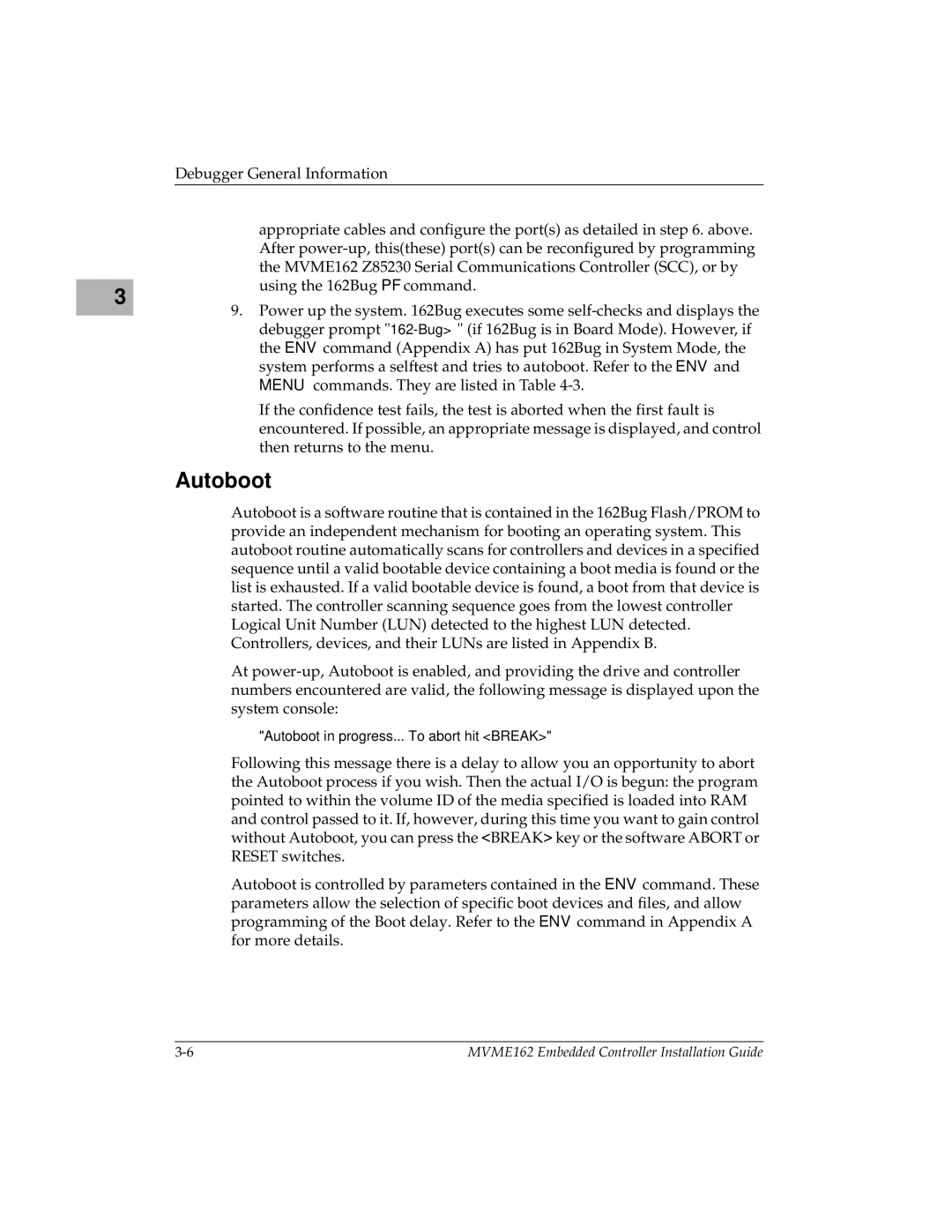
Debugger General Information
3
appropriate cables and configure the port(s) as detailed in step 6. above. After
9.Power up the system. 162Bug executes some
If the confidence test fails, the test is aborted when the first fault is encountered. If possible, an appropriate message is displayed, and control then returns to the menu.
Autoboot
Autoboot is a software routine that is contained in the 162Bug Flash/PROM to provide an independent mechanism for booting an operating system. This autoboot routine automatically scans for controllers and devices in a specified sequence until a valid bootable device containing a boot media is found or the list is exhausted. If a valid bootable device is found, a boot from that device is started. The controller scanning sequence goes from the lowest controller Logical Unit Number (LUN) detected to the highest LUN detected. Controllers, devices, and their LUNs are listed in Appendix B.
At
"Autoboot in progress... To abort hit <BREAK>"
Following this message there is a delay to allow you an opportunity to abort the Autoboot process if you wish. Then the actual I/O is begun: the program pointed to within the volume ID of the media specified is loaded into RAM and control passed to it. If, however, during this time you want to gain control without Autoboot, you can press the <BREAK> key or the software ABORT or RESET switches.
Autoboot is controlled by parameters contained in the ENV command. These parameters allow the selection of specific boot devices and files, and allow programming of the Boot delay. Refer to the ENV command in Appendix A for more details.
MVME162 Embedded Controller Installation Guide |
